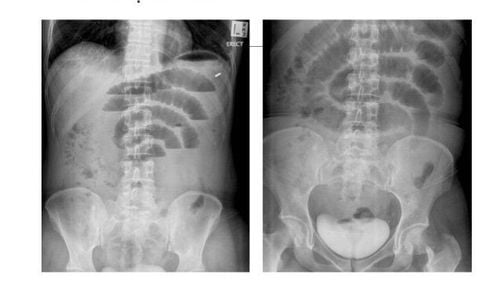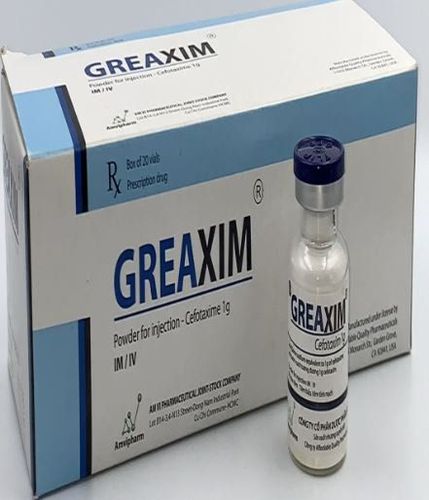This is an automatically translated article.
The article was professionally consulted by Specialist Doctor II Tran Van Trong - Specialist in Pediatric Surgery, Plastic Surgery - Aesthetics - Department of General Surgery, Vinmec Danang International HospitalCongenital atrophy of the small intestine is a malformation of the gastrointestinal tract and is also the most common cause of intestinal obstruction in infants, pediatric patients need emergency surgery otherwise the child may die or leave complications. severe symptoms related to nutrition, physical development and quality of life later in life.
1. Symptoms of small bowel atrophy
Intestinal atresia is a term used to describe complete obstruction or obstruction anywhere in the small intestine. Although this disease can affect any part of the gastrointestinal tract, the small intestine is the most common site.
Frequency, symptoms and diagnostic methods in each patient will vary depending on the site of intestinal atrophy.
The small intestine is divided into three main parts: duodenum, jejunum, and ileum. Congenital atrophy is usually classified according to the site of atrophy, obstruction, or stricture. For example, congenital duodenal obstruction, congenital jejunal obstruction, and congenital ileal obstruction.
Congenital duodenal obstruction may be accompanied by intestinal malformations, hernias or defects of the abdominal wall that squeeze the small intestine and disrupt the blood supply to the intestine. About half of infants with duodenal obstruction are born prematurely and more than 30 percent have Down syndrome. Between 50 and 75% of children have abnormalities that affect other parts of the digestive system, heart, or kidneys.
If the infant has small bowel atrophy and leads to intestinal obstruction, then symptoms will be detected within a day or two after birth such as:
The baby refuses to suckle The child vomits The baby's abdomen is distended

2. Causes of small bowel atrophy
Experts believe that the cause of small bowel atrophy is an inadequate blood supply to the intestines of the fetus during development. This disease tends to be related to genetics, although the specific genetic cause is still not fully proven by scientists.3. Diagnosis of small bowel atrophy
To diagnose small bowel atrophy , the first step, the doctor needs to perform diagnostic techniques to detect the cause of the above symptoms in the infant. If bowel obstruction is suspected after birth, the doctor will perform diagnostic tests and techniques to find the location of the blockage, including:
Abdominal X-ray or abdominal ultrasound. Contrast X-ray of the lower gastrointestinal tract: the rectum, large intestine, and lower part of the small intestine. The doctor will use an X-ray contrast agent that is inserted into the rectum as an enema to coat the inside of the intestine. The child will then have an X-ray. On this X-ray image will show areas of narrowing, obstructions, the width of the bowel, and other problems. Contrast upper gastrointestinal X-ray: The doctor will use barium solution that is given orally or insert a tube through the mouth or nose to bring this solution into the stomach. Then, the child has X-rays to evaluate the digestive organs. Doctors may also perform imaging studies of your child's heart and kidneys to check for abnormalities that sometimes accompany intestinal obstruction.

4. Treatment of small bowel atrophy
Surgery is often the only option for treating small bowel atrophy as well as intestinal obstruction. During surgery, the surgeon will have to open the abdomen and remove the part of the intestine that is diseased, such as necrosis, dilatation. At the same time, the doctor will try to keep as much of the bowel healthy as possible and then reconnect the child's intestines.After surgery, the child will be given parenteral nutrition until the doctor allows the child to eat by mouth. However, this process will happen gradually, by reducing the amount of parenteral nutrition and gradually increasing breastfeeding and finally exclusive breastfeeding.
Small bowel atrophy in infants can be prevented if during pregnancy, pregnant women are well taken care of, supplemented with enough iron. At Vinmec International General Hospital, there is a package maternity service as a solution to help pregnant women feel secure because of the companionship of the medical team throughout the pregnancy. When choosing Maternity Package, pregnant women can:
The pregnancy process is monitored by a team of highly qualified doctors Regular check-ups, early detection of abnormalities The Package Maternity package helps to facilitate convenient for the birthing process Newborns get comprehensive care
Please dial HOTLINE for more information or register for an appointment HERE. Download MyVinmec app to make appointments faster and to manage your bookings easily.
References: Childrenshospital.org; Cincinnatichildrens.org













